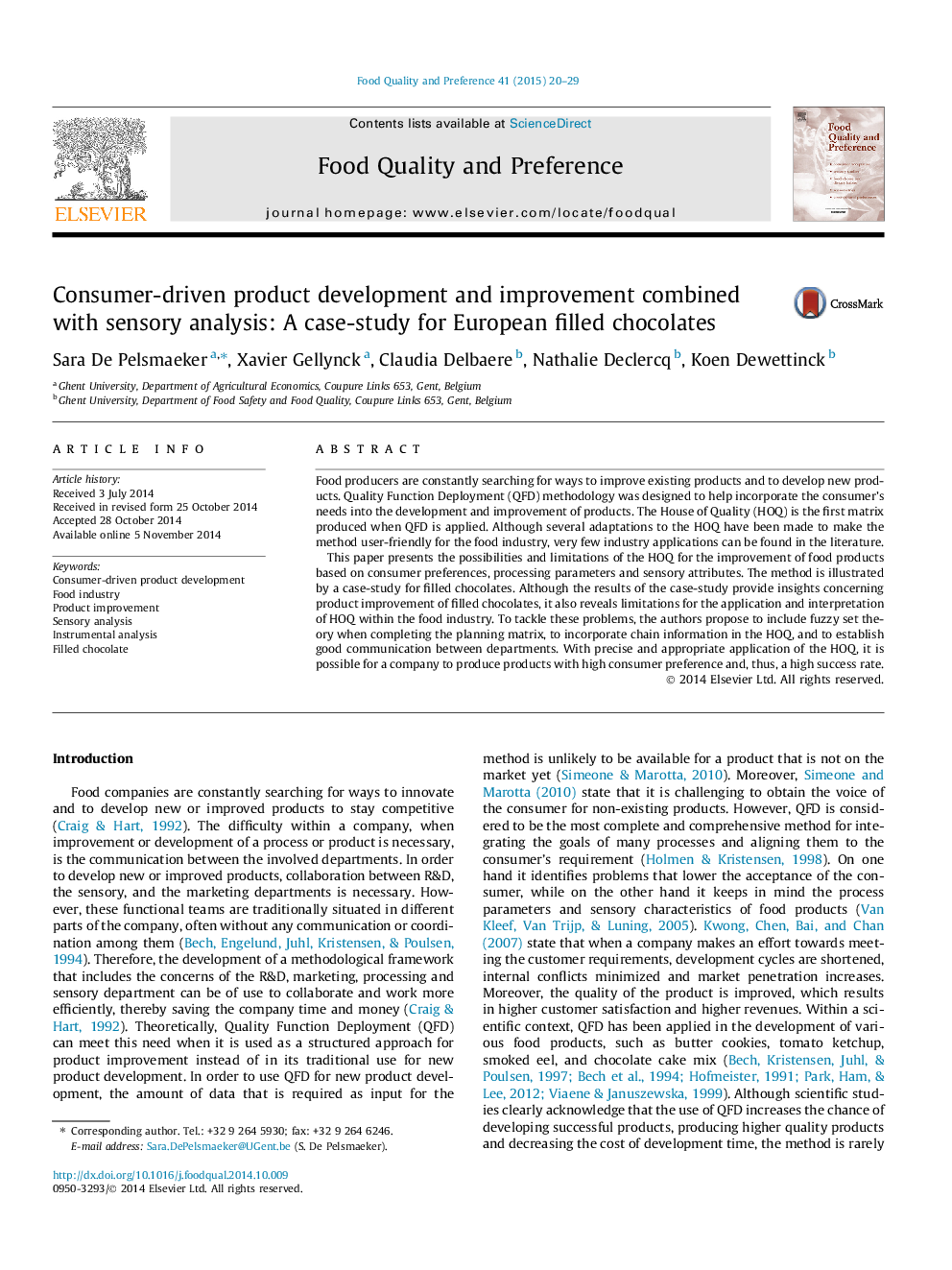| Article ID | Journal | Published Year | Pages | File Type |
|---|---|---|---|---|
| 4317007 | Food Quality and Preference | 2015 | 10 Pages |
•Short review of the QFD methodology with focus on the House of Quality.•Case study of the application of the HOQ on filled chocolates.•Combination of sensory analysis, instrumental analysis and production characteristics in the HOQ.•Results for the optimization of the production of filled chocolates with the problem of fat bloom.•Critical comments and recommendations for the application of the HOQ within the food industry.
Food producers are constantly searching for ways to improve existing products and to develop new products. Quality Function Deployment (QFD) methodology was designed to help incorporate the consumer’s needs into the development and improvement of products. The House of Quality (HOQ) is the first matrix produced when QFD is applied. Although several adaptations to the HOQ have been made to make the method user-friendly for the food industry, very few industry applications can be found in the literature.This paper presents the possibilities and limitations of the HOQ for the improvement of food products based on consumer preferences, processing parameters and sensory attributes. The method is illustrated by a case-study for filled chocolates. Although the results of the case-study provide insights concerning product improvement of filled chocolates, it also reveals limitations for the application and interpretation of HOQ within the food industry. To tackle these problems, the authors propose to include fuzzy set theory when completing the planning matrix, to incorporate chain information in the HOQ, and to establish good communication between departments. With precise and appropriate application of the HOQ, it is possible for a company to produce products with high consumer preference and, thus, a high success rate.
